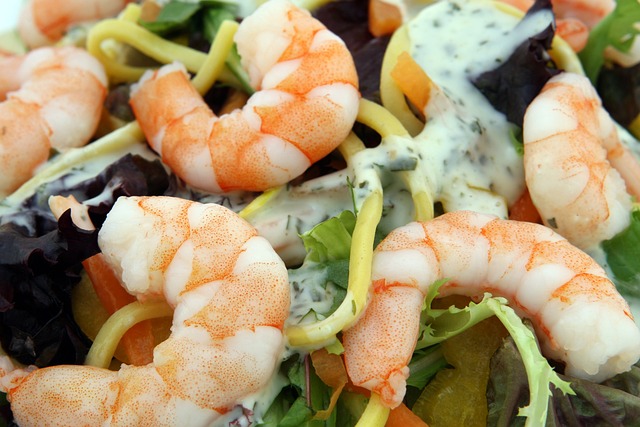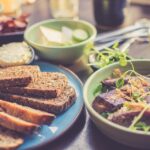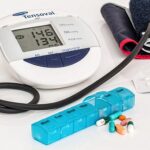The Golo Metabolic Plan, commonly referred to as the Golo diet, made its debut in 2009. The diet’s website claims that it was created by a group of committed physicians and pharmacists, but their identities remain ambiguous.
The website advises that to adopt the Golo program, you consume “1,300 to 1,500 nutritiously packed calories” each day, and use a dietary supplement named Release. The objective is to enhance your health without reducing the amount of calories excessively, depriving yourself of food categories, or consuming unhealthy diet foods.
The success of the strategy relies on the concept of taking charge of your metabolic well-being, which involves enhancing metabolic efficiency, tackling insulin resistance (a key factor in the development of prediabetes and type 2 diabetes), and harmonizing hormone levels, including those related to hunger and stress.
According to the company’s website, the primary focus of the program is on combating insulin resistance, which is key to achieving the desired results of stopping weight gain and facilitating the release of stored fat. The dietary supplement is claimed to effectively reverse insulin resistance.
The Centers for Disease Control and Prevention (CDC) suggests that boosting insulin sensitivity can be achieved without the need for supplements. Instead, implementing lifestyle changes including engaging in physical activity, shedding excess weight, avoiding high levels of blood sugar, managing stress, and getting sufficient sleep can reverse insulin resistance.
Golo asserts significant medical benefits, such as reduced PCOS symptoms, reversal of prediabetes or type 2 diabetes, and improvements in blood pressure and cholesterol, as reported by its clients.
Foods to Eat
The GOLO Diet allows for the combination of various fuel groups to prepare well-balanced meals. It is recommended to include one to two servings from each fuel group when preparing your meals.
- Protein: meat, poultry, seafood, eggs, dairy
- Fats: coconut oil, grass-fed butter, olive oil, ghee, nuts, seeds
- Carbs: fruits (berries, apples, oranges, etc.), sweet potatoes, white potatoes, legumes, whole grains (quinoa, buckwheat, brown rice, etc.)
- Vegetables: leafy greens, cucumber, celery, cauliflower, broccoli, asparagus, tomatoes
Foods to Limit/Avoid
- Processed foods: convenience meals, potato chips, pretzels, cookies, crackers, pre-packaged desserts, refined grains
- Sugar-sweetened beverages: soda, fruit juice, sweet tea, sports drinks
- Artificial sweeteners: aspartame, sucralose, saccharin, ace-K, etc.
When attempting the brief diet plans such as the “7 Day Kickstart” or “Reset 7,” it is crucial to also restrict other food categories. While these foods should be limited during the initial stage of the diet, reintroducing them gradually is possible during the switch to the standard GOLO Diet.
- Red meat: high-fat cuts of beef, pork, lamb, veal, venison
- Dairy: milk, yogurt, cheese, butter
- Whole grains: rice, bread, buckwheat, barley, oats, quinoa, etc.
Pros of the GOLO Diet
Encouragement to consume nourishing foods is provided, which constitutes positive news. Samantha Cassetty, a Registered Dietitian in New York City, affirms that the approach advocates for the consumption of whole-foods and healthy-eating habits, placing an emphasis on fruits, vegetables, lean protein, nuts, and whole grains as opposed to refined grains. She suggests that this plan is an excellent means of promoting a healthier weight and enhancing overall health.
By emphasizing whole foods, the necessity for processed foods is reduced, which can positively impact your health. Cassetty references a May 16, 2019, Cell Metabolism study that proposes this eating approach may aid in weight loss. The study involved a limited number of participants (20 adults) who consumed either an ultra-processed or unprocessed diet for two weeks.
They swapped their diets for an additional 14-day period. While on the processed food diet, the subjects ingested an extra 500 calories (from fats and carbohydrates) compared to those who consumed fresh foods, and experienced a weight increase of approximately two pounds. Meanwhile, the fresh food dieters dropped two pounds. Cassetty highlights that people who consume processed foods tend to eat faster and do not feel full quickly, leading to an increased consumption of food.
Cons of the GOLO Diet
The success of this diet is dependent on a supplement named Release. As per the company’s frequently asked questions, Release consists of seven plant-based ingredients and three minerals that are all-natural.
- Zinc
- Magnesium
- Chromium
- Banaba leaf extract
- Rhodiola rosea
- Berberine extract
- Salacia extract
- Gardenia extract
- Inositol
- Apple extract
Banaba leaf extract is considered as a weight reduction aid that obstructs the rise of insulin levels. Available proof suggests that Banaba leaf extract has the potential to reduce blood sugar levels in individuals who have diabetes. According to a study, Rhodiola rosea, a flowering plant, can possibly affect fat-storing cells, particularly in the midsection.
Still, this preliminary research is not solid evidence that this type of supplement — or any weight loss supplement — is a silver bullet. “There has never been a supplement to materially and meaningfully boost your weight loss for any sustainable or long-term period,” says Cassetty.
Moreover, the Release supplement has safety concerns as pointed out by Emmaline Rasmussen, the owner of Sound Nutrition in Chicago. She advises individuals to seek advice from a physician and a registered dietitian before attempting the Golo diet, especially those who monitor their diabetes. Rasmussen explains that diabetes may require medication, and it could be hazardous to commence a diet that purports to affect insulin levels without medical monitoring.
Although the company assures that the supplement can be taken alongside medications, it is advisable to consult your healthcare provider to determine if there is a need to modify your medication dosage. This is because Release may decrease blood sugar levels, making it necessary to adjust certain medications accordingly, according to the company’s statement.
If you’re currently on medication for high blood pressure, which this diet claims to enhance, your doctor should monitor your progress and evaluate if any changes are necessary to your prescription.
It is important to note that the regulations for supplements by the U.S. Food and Drug Administration (FDA) differ from those for conventional medications. The FDA does not typically conduct pre-market testing of supplements as this falls under the responsibility of the manufacturers.
Achieve weight loss with GOLO.
Although there is limited research on the impacts of the GOLO Diet, it has a foundation in several proven weight loss methods by restricting intake of processed and sweetened foods and promoting the consumption of nutritious options.
In addition, the GOLO Diet advocates for consistent physical activity, which is a crucial element of any strategy for reducing weight. While there are a limited number of research studies examining the efficacy of the GOLO Diet, it’s essential to acknowledge that they were all carried out and financed by the creators of the program.
An instance of weight loss success was observed in a study involving 54 individuals, where the diet was supplemented with a lifestyle change plan, leading to an average of 53.4 pounds lost over 26 weeks. Additionally, another study revealed that individuals suffering from type 2 diabetes who followed the diet and took GOLO Release supplement for 13 weeks experienced notable weight loss and better regulation of blood sugar levels.
Additional research is required to establish whether the outcomes achieved by the GOLO Diet are attributable to the diet alone or the confluence of diet, physical activity, and behavioral adjustments. Furthermore, impartial studies are necessary to determine if the GOLO Diet exceeds other weight loss programs that blend dietary and behavioral measures in terms of efficacy.
Benefits
The effectiveness of the GOLO Diet compared to other available diet plans is uncertain, yet it is crucial to take into account its potential advantages.
To begin with, the strategy relies on several dependable weight loss principles and advocates for incorporating nutritious, unprocessed foods into your diet while restricting sugary treats, artificial sweeteners, and processed ingredients. Additionally, it promotes consistent physical activity, which aids in maintaining weight loss and enhancing general well-being.
Making these changes to your diet and lifestyle not only aids in weight control, but it may also improve blood sugar, heart health, energy levels and more. Eating a well-balanced diet rich in nutritious foods can also ensure that you meet your nutritional needs to protect against deficiencies and keep your appetite in check.
Although individuals who are knowledgeable in health and wellness may not require the diet, it can serve as a useful resource for novices seeking meal planning advice. In addition, membership entails entry into an online community and assistance from trainers, making it advantageous for a broad range of individuals.
GOLO cost
The GOLO site states that to try out the weight loss supplement and its accompanying guidebook and online resources for a month, the cost remains at $59.95, whereas a minimum purchase of a three-month supply is priced at $119.85.
The plan comprises several regulations, point systems and rules that may seem intricate and tiresome for a few dieters. Due to the multitude of guidelines incorporated in the regime, some may perceive it as exceedingly restrictive and perplexing, rendering it challenging to sustain over time.
Moreover, although the GOLO Diet supplement may comprise a blend of natural extracts that could aid in regulating blood sugar levels and promoting weight loss, it includes various minerals and micronutrients that are readily available through adherence to a nutritious eating plan.
Additionally, although the GOLO Diet consists of multiple crucial aspects of a nutritious diet, impartial and peer-evaluated research on the GOLO Diet is insufficient. Further studies are necessary to establish whether the GOLO Diet is superior to alternative weight loss regimens.
Risks and Side Effects
Before embarking on a diet that involves a weight loss supplement and exercise, it’s vital to consult with your doctor, particularly if you have any pre-existing health conditions or are taking medication. This is essential as these factors need to be taken into account to ensure your overall well-being.
The safety of the GOLO Diet for children, pregnant women, or those who are breastfeeding has not been extensively studied. Hence, it’s recommended to prioritize consuming a well-balanced diet to meet your body’s nutritional requirements and refrain from taking GOLO Release without the approval of a medical practitioner.
Scientific Research on the GOLO Diet
There is a lack of peer-reviewed published research in a medical journal on the Golo diet. One of their pilot studies did not have a placebo group.
Incorporating a placebo group is a vital aspect of high-quality research since it enables researchers to determine whether the outcomes are due to the intervention. Cassetty emphasizes the importance of peer review, stating that outcomes are less significant if the research lacks such thoroughness.
In May 2019, a peer-reviewed journal called Trends in Diabetes and Metabolism published a small study that was randomized, double-blind, and placebo-controlled, and is now accessible on the Golo company’s website. The study had 68 participants, wherein those who adhered to the Golo diet and consumed Release lost approximately 13 pounds in 13 weeks, while the placebo group only lost about 7.5 pounds.
It is important to consider that the study involved a small sample size and only lasted for 13 weeks, providing short-term results without any indication of the participants’ progress beyond that time frame. This implies that it is possible to shed weight on any diet when followed for such a brief period. Additionally, it’s worth noting that the study’s financing originated from the Golo organization, which may create a potential conflict of interest.
Alternative Diets
The GOLO Diet is not the only one that operates on the same principles, as there are several other diets. One such diet is the Metabolic Diet, which focuses on heightening your body’s metabolism naturally in order to promote weight loss.
The Insulin Resistance Diet focuses on consuming whole foods instead of processed and refined ingredients to boost insulin sensitivity. Similarly, the Atkins Diet and South Beach Diet restrict carb intake to promote weight loss and maintain stable blood sugar levels.
Even though a lot of people seek out the top-notch diabetes diet plan, the most effective diet pills, or the ultimate diet for shedding belly fat, it’s not mandatory to adopt a costly trendy diet or buy expensive products to attain your desired outcome.
Achieving better health can be as simple as incorporating a range of nutritious whole foods into your diet, controlling your intake of processed foods, and making exercise a regular part of your routine.



